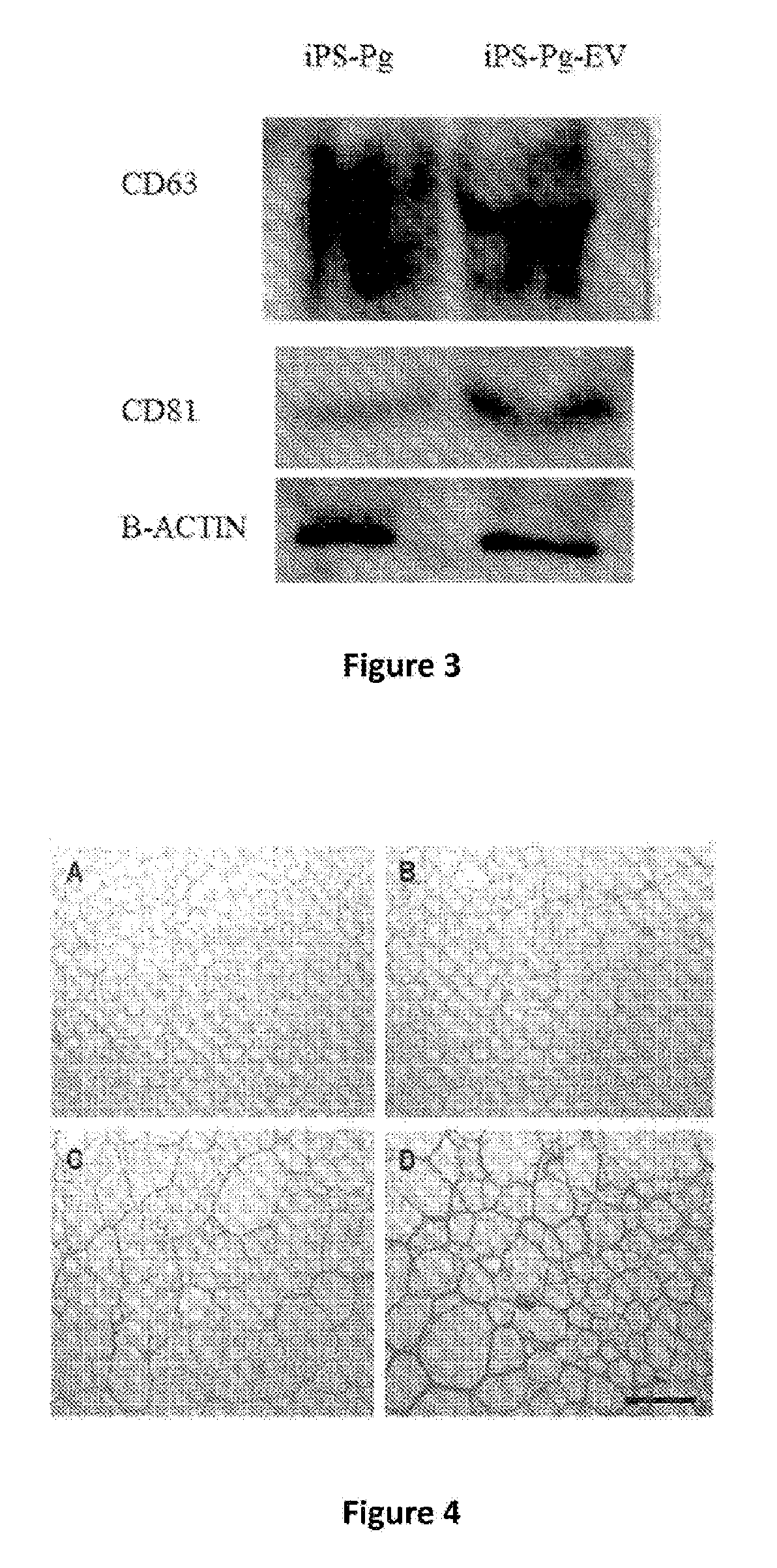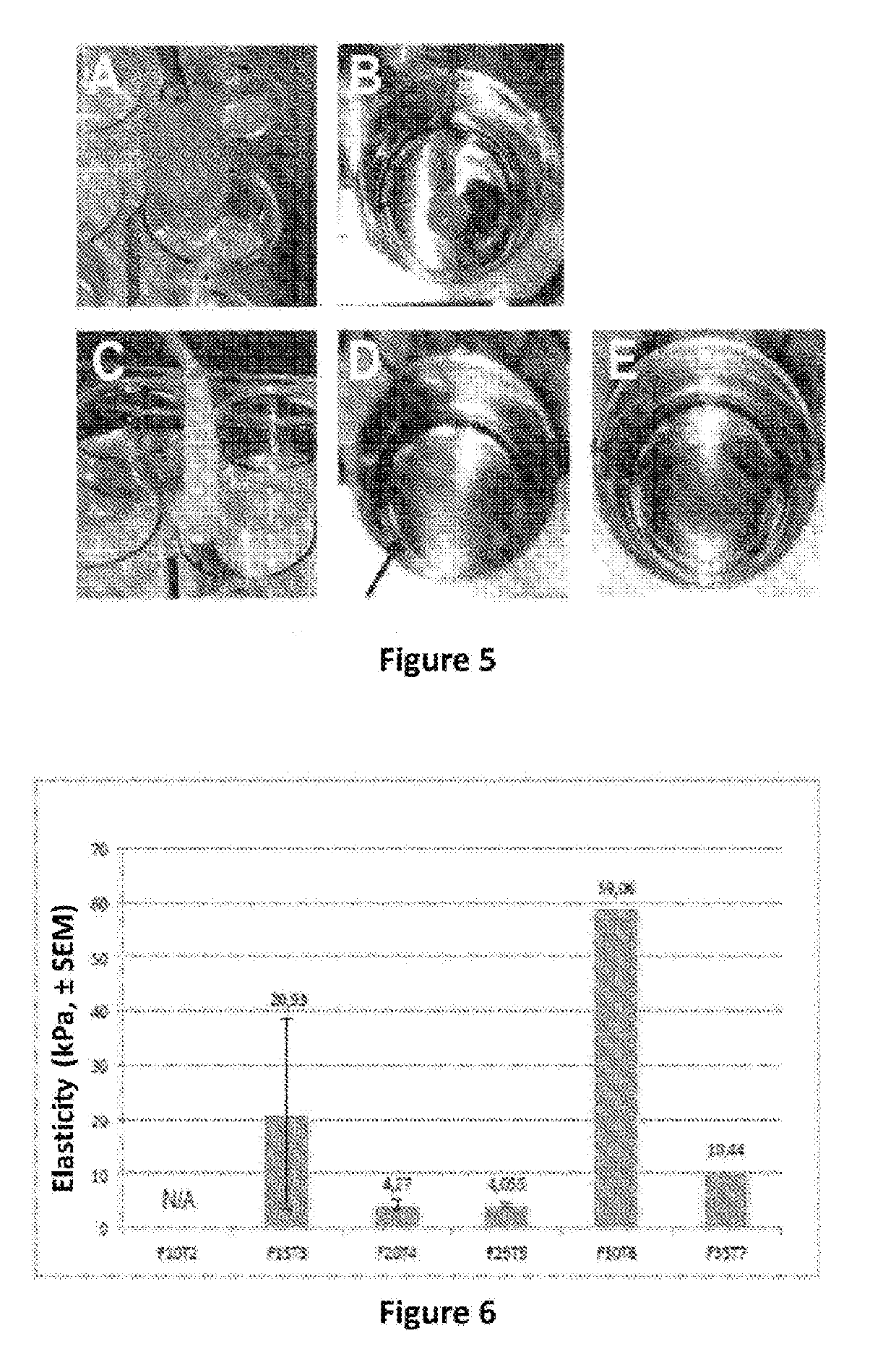Biomaterial for therapeutic use
a technology of biomaterials and therapeutics, applied in the field of biomaterials, can solve the problems of still controversial stem cell research and the high cost of this type of therapy
- Summary
- Abstract
- Description
- Claims
- Application Information
AI Technical Summary
Benefits of technology
Problems solved by technology
Method used
Image
Examples
example 1
Obtained Vesicles from Stem Cells
[0108]By way of non-limiting examples, the following protocols are used for the production of vesicles intended for the implementation of this invention:[0109]For the production of vesicles of cardiac cells, the protocol described in the document Barile et al. [44].[0110]For the production of vesicles of mesenchymal stem cells, the protocol described in the document Lai et al. [46].[0111]For the production of vesicles of neural stem cells, the protocol described in the document Baulch et al. [47].
[0112]For example in the case of EV of cardiovascular progenitors derived from iPS, cardiac progenitor cells derived from human iPS were used (iPS-Pg: iCell Cardiac Progenitor Cells, ref.: CPC-301-020-001-PT) which come from the supplier Cellular Dynamics International (CDI, Madison, Wis., USA). These progenitors coming from cryopreserved iPS, are defrosted and inoculated at a cell density of 78,000 cells / cm2, in a flask coated beforehand with fibronectin (r...
example 2
esicles
[0118]In this example, one or the other of the two vesicle marking techniques detailed hereinbelow are used, in order to verify the integration or inclusion of the vesicles in the polymer chosen during the preparation of the biomaterial of this invention, a marking by means of a colouring agent and a marking with calcein-AM (AM=acetoxymethyl):
(a) Marking with a Colouring Agent
[0119]To mark the membrane of all of the sub-types of EV obtained, indiscriminately, we use the hydrophobic colouring agent, DiD Vybrant cell tracer (trademark) (ref.: V-22887, Vybrant™ Cell-Labeling Solutions, Molecular Probes), hereinafter “DiD”. The clarified conditioned mediums (see hereinabove) are transferred into ultracentrifugation tubes. The volume is made up with PBS to 15-20 mL. One microlitre of DiD Vybrant cell tracer is added per mL of conditioned and homogenised medium. The conditioned mediums are ultracentrifuged at 100,000 g for 3 h at 4° C. The pellets are resuspended in PBS. The volume...
example 3
on of Biomaterials According to the Invention
3.a) Production of Fibrin Patches:
[0121]We have prepared fibrin patches as disclosed in this example. The principle is to resuspend the extracellular vesicles obtained after centrifugation (see example 1 hereinabove) in an aqueous solution of fibrinogen and then to mix this solution with a solution of thrombin. The formation of the fibrin polymer is carried out, then, while coating and trapping the EVs.
[0122]The pieces of fibrin or “patches” are prepared using the EVICEL® product (Omrix Biopharmaceutical-Ethicon Biosurgery, Belgium) with the following two components, in order to obtain fibrin:[0123]Human fibrinogen (solution of 2 ml at 50-90 mg / ml)[0124]Human thrombin (solution of 2 ml at 800-1200 U / ml)
[0125]The patches are formed using mixtures of a solution of fibrinogen and of a solution of thrombin each dissolved in PBS or an alpha-MEM solution. The ratio of the components is presented in table I hereinbelow, and the ratio of the volu...
PUM
| Property | Measurement | Unit |
|---|---|---|
| pore size | aaaaa | aaaaa |
| pore size | aaaaa | aaaaa |
| molecular weight | aaaaa | aaaaa |
Abstract
Description
Claims
Application Information
 Login to View More
Login to View More - R&D
- Intellectual Property
- Life Sciences
- Materials
- Tech Scout
- Unparalleled Data Quality
- Higher Quality Content
- 60% Fewer Hallucinations
Browse by: Latest US Patents, China's latest patents, Technical Efficacy Thesaurus, Application Domain, Technology Topic, Popular Technical Reports.
© 2025 PatSnap. All rights reserved.Legal|Privacy policy|Modern Slavery Act Transparency Statement|Sitemap|About US| Contact US: help@patsnap.com



